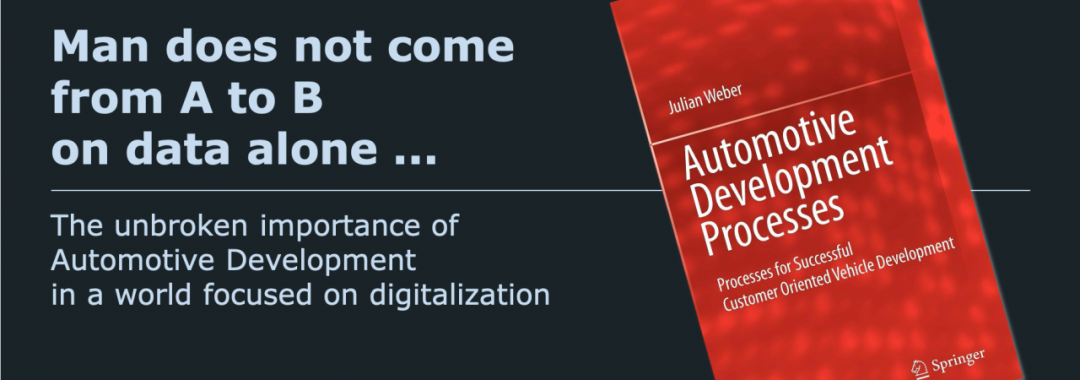In terms of future mobility, digitalization may be key for advanced vehicle features, online fleet control, and digital mobility services, but an in-depth expertise in software and data alone is certainly not sufficient. At the end of the day (if you don’t want to walk), you need a physical motorized vehicle which – regardless of whether it is a passenger car, a minivan or a bus, whether it is owned or shared, and whether you are the driver or a passenger -someone has to develop and manufacture.
Developing especially a premium passenger car is still an amazingly complex process. It starts with transforming the full bandwidth of customer, legal and economic requirements into a harmonious, consistent and competitive complete vehicle concept, followed by breaking this down and designing thousands of hard- and software pieces, merging them again into a complete vehicle, and ends with testing and validating the this vehicle, sometimes again and again.
While chatting with me about this, one of my former Automotive Engineering students at Clemson University mentioned that my textbook Automotive Development Processes – Processes for Successful Customer Oriented Vehicle Development would still be her “bible” when it comes to holistically understanding the interlaced work streams of complete vehicle development. Slightly flattered, I took my dusty copy out of the shelf and examined critically what I had compiled 11 years ago. My findings: Then, I didn’t even mention autonomous driving, and it seems that my confidence in the further development of high voltage batteries and thus the future of electric drivetrains in general was strongly limited. But while design and testing methods have certainly improved over the years in all areas of R&D, and especially agile techniques have brought the development of mechatronic systems to a new level, the overall approach of transforming customer expectations, market demand, regulatory framework and innovative technologies into product strategy, concepts and architectures, and then closely monitoring the desired complete vehicle properties during hardware and software development has not changed much ever since.
The fine art of conducting the highly sophisticated orchestra of the involved processes – from body design and crashworthiness to ECU programming and E/E system integration, from interior styling and cabin comfort to engine design and emission control, from spring-damper-system configuration and agility to connectivity and theft deterrence – is still the indispensable basis for successful complete vehicle development and compiled in this textbook.
And when we master these basics, it makes sense to go ahead with digitalization …
